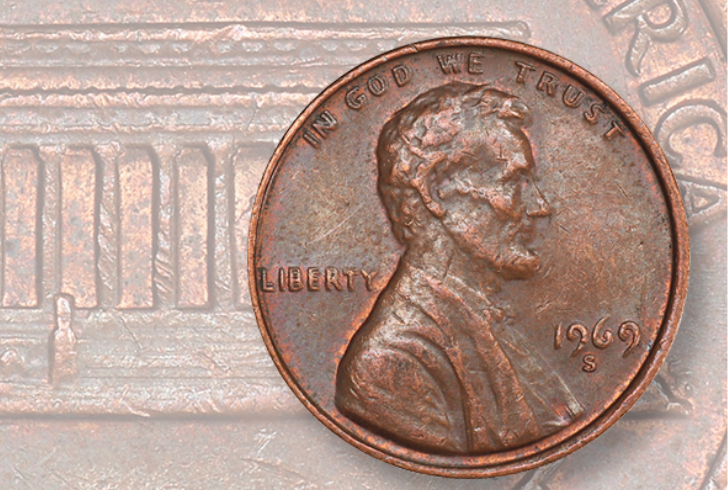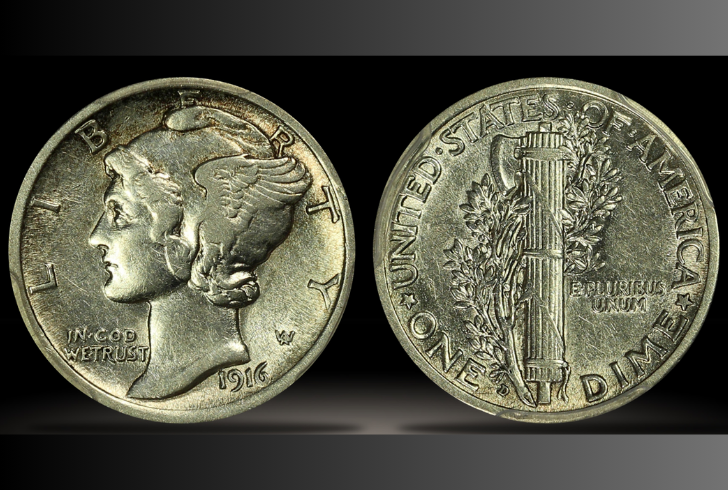Most pocket change isn’t worth more than face value, but every now and then, a rare coin slips through everyday transactions. Some of these coins, due to minting mistakes or historical significance, can be worth thousands—or even millions—of dollars. If you’ve ever glanced at your change and wondered if any of those pennies, dimes, or quarters could be special, you might be in for a surprise.
Here are nine U.S. coins that have turned up in circulation and are worth far more than what they appear.
1. 1943 Bronze Lincoln Wheat Penny
During World War II, the U.S. Mint switched from copper to steel pennies to save metal for the war effort. However, a small batch of 1943 pennies was mistakenly struck on leftover bronze planchets from 1942. These pennies are some of the rarest ever produced, with one selling for as much as $2.3 million. Want to check if you have one? Use a magnet—if the penny sticks, it’s steel. If not, it could be a valuable find.
2. 1969-S Lincoln Cent Doubled Die

coinworld.com | Due to a minting error, the 1969-S doubled die cent is highly collectible.
This penny is famous for a noticeable doubling effect on the date and lettering. Initially mistaken for counterfeits, these are actually the result of a minting error. A well-preserved 1969-S doubled die cent can sell for over $25,000.
3. 1955 Doubled Die Lincoln Cent
A striking error in the minting process led to a dramatic doubling of the date and letters on the 1955 penny. Unlike subtle doubling on some coins, this mistake is easily visible. Collectors are willing to pay over $1,000 for a well-preserved one.
4. 1970-S Small Date Lincoln Cent
Not all valuable coins are over a century old. This variation of the 1970-S penny has a smaller date that makes it distinct. It’s a rare find, and collectors are always on the lookout. In top condition, it has sold for impressive sums.
5. 1992 Close AM Penny
A small detail makes a huge difference in this coin’s value. Most 1992 Lincoln pennies have a noticeable gap between the letters “A” and “M” in “AMERICA.” However, a rare error resulted in a version where the letters are almost touching. These have sold for over $25,000.
6. 1965 Silver Dime
In 1965, the U.S. Mint transitioned from silver dimes to copper-nickel versions, but a few dimes were mistakenly struck on silver planchets. If you suspect you have one, weigh it—a genuine silver 1965 dime should be heavier than a regular one. These can be worth over $5,000.
7. 1932-D Washington Quarter
This quarter is a key collector’s item due to its low production numbers. With only 436,800 minted, it’s one of the scarcest in the Washington Quarter series. High-grade versions have sold for more than $74,000.
8. 1916-D Mercury Dime

kittlecoins.com | A 1916-D Mercury Dime in good condition can be worth thousands.
Produced in limited numbers, the 1916-D Mercury Dime from the Denver Mint is one of the rarest in its series. Finding one in good condition could mean a payday in the thousands.
9. 1937-D Three-Legged Buffalo Nickel
An unusual minting mistake resulted in some 1937 Buffalo Nickels appearing to have only three legs. This error makes them highly collectible, with values ranging from $1,000 to $100,000 depending on condition.
How to Spot and Verify Valuable Coins
If you think you’ve found one of these rare U.S. coins, here’s what to do next:
1. Check for errors: Look closely at the date, lettering, and other details. Doubling effects and unusual spacing can indicate a rare coin.
2. Weigh it: Certain errors, like the 1965 silver dime, will weigh differently from regular coins.
3. Look for mint marks: Some coins are more valuable based on where they were produced.
4. Get a professional opinion: Coin grading services like PCGS or NGC can help confirm authenticity and value.
Rare coins can still be found in everyday transactions, often overlooked by those who don’t know what to look for. Whether you’re a serious collector or just someone with an eye for details, keeping an eye on your pocket change might lead to an incredible discovery—and possibly a hefty payday.

